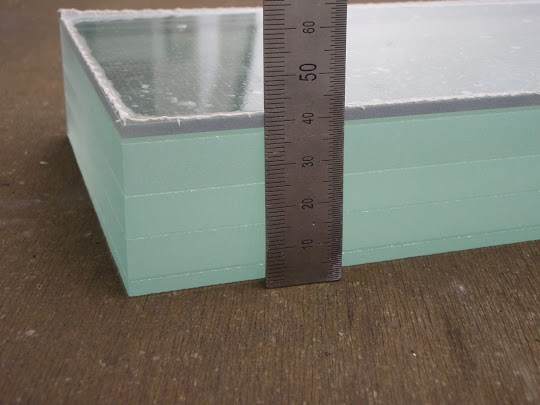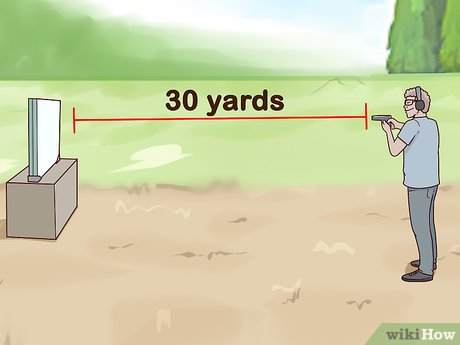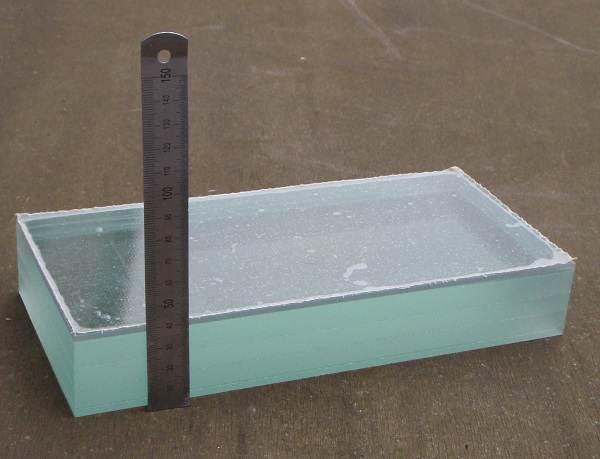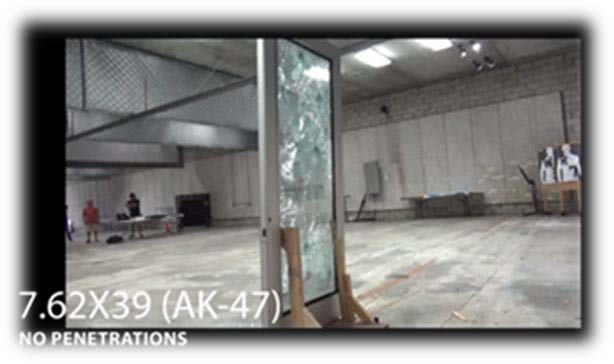Ever wondered what it takes to penetrate bulletproof glass? We’ve all seen it in movies, the unyielding and seemingly impenetrable barrier that stands between the heroes and their adversaries. But what if there was a way to cut through this reinforced fortress? In this article, we explore the mesmerizing world of bulletproof glass and uncover the surprising techniques and tools that can breach its seemingly invincible surface. Brace yourself for a captivating journey as we unlock the secrets behind what cuts through bulletproof glass.
Different Types of Bulletproof Glass
Laminated Glass
Laminated glass is one of the most common types of bulletproof glass available in the market today. It consists of multiple layers of glass that are bonded together with a layer of polyvinyl butyral (PVB) between them. This PVB layer enhances the strength and durability of the glass, preventing it from shattering upon impact. Laminated glass is highly effective against bullet penetration and offers additional benefits, such as UV protection and sound insulation.
Polycarbonate Glass
Polycarbonate glass, also known as “lexan glass,” is made from a strong and durable thermoplastic material called polycarbonate. This type of bulletproof glass is lighter in weight compared to laminated glass and has a high level of impact resistance. Polycarbonate glass can withstand multiple rounds of gunfire without shattering, making it a popular choice for security applications.
Acrylic Glass
Acrylic glass, commonly referred to as “plexiglass,” is another type of bulletproof glass. It is made from a transparent thermoplastic material called polymethyl methacrylate (PMMA). Acrylic glass offers excellent clarity and is highly resistant to impact. However, it is not as strong as laminated glass or polycarbonate glass, making it more susceptible to scratching and cracking.
Glass-Clad Polycarbonate
Glass-clad polycarbonate is a hybrid form of bulletproof glass that combines the strength and durability of laminated glass with the impact resistance of polycarbonate. It consists of a thin layer of polycarbonate bonded between two layers of glass. This combination provides enhanced protection against ballistic threats while maintaining optical clarity and structural integrity.
Polyglass
Polyglass is a relatively newer type of bulletproof glass that combines laminated glass with a layer of polycarbonate. It offers superior strength and durability, making it highly effective against bullet penetration. Polyglass is often used in high-security facilities, military vehicles, and other applications where maximum protection is required.
Factors Affecting the Resistance of Bulletproof Glass
Thickness of the Glass
The thickness of the bulletproof glass plays a crucial role in its resistance against different types of ammunition. Thicker glass can withstand higher velocity and caliber ammunition, providing greater protection. However, it is important to strike a balance between thickness and weight, as thicker glass can be heavy and impractical for certain applications.
Quality and Composition of the Glass
The quality and composition of the glass used in bulletproof glass greatly affect its resistance. High-quality materials and manufacturing processes ensure that the glass is strong, durable, and capable of withstanding severe impact. The composition of the glass, such as the number of layers and the type of interlayer material, also contributes to its overall performance.
Layering and Construction
The layering and construction of bulletproof glass determine its ability to absorb and distribute the energy from a projectile impact. A well-designed glass with multiple layers and interlayers can effectively disperse the force, increasing its resistance. The construction techniques used, such as bonding methods and the quality of the adhesive, also play a significant role in enhancing the glass’s durability and longevity.
Testing and Certification
Bulletproof glass must undergo rigorous testing and certification to ensure its effectiveness. Testing procedures evaluate the glass’s performance against different ballistic threats, including various ammunition types and velocities. Certification from recognized authorities provides assurance of the glass’s compliance with industry standards and gives confidence in its reliability.

This image is property of safirewaterjet.co.uk.
Tools and Techniques for Breaking Bulletproof Glass
Diamond-Tipped Tools
Diamond-tipped tools are one of the most effective ways to break bulletproof glass. The hardness of diamond allows it to cut through the glass’s surface, creating fractures that weaken its structural integrity. Diamond-tipped glass cutters, drill bits, and chain saws are commonly used tools in breaking bulletproof glass.
Torch and Heat
The application of heat, often through a high-intensity torch, can weaken the bulletproof glass and make it susceptible to breaking. Thermal shock caused by localized heating and cooling can create stress fractures, compromising the glass’s integrity.
Explosives
Explosives can be used to breach bulletproof glass in high-stakes scenarios or controlled demolition situations. Shock tube detonators, water hammer effect, improvised explosive devices (IEDs), and shaped charges are some of the common methods employed to penetrate bulletproof glass.
Drill Bits
Specially designed drill bits, such as carbide drill bits, can be used to create small holes in bulletproof glass. These holes can be enlarged gradually, weakening the surrounding glass until it can be broken.
Electromagnetic Pulse
An electromagnetic pulse (EMP) can disrupt the electrical conductivity of bulletproof glass, compromising its strength and durability. EMP generators and electromagnetic drilling methods can be utilized to exploit this vulnerability and break the glass.
Hydraulic Pressure
Applying hydraulic pressure to bulletproof glass can potentially cause it to fracture or break. Hydraulic equipment, water jets, and pneumatic tools are commonly employed to exert pressure on the fragile areas of the glass.
Chemical Attacks
Certain chemicals, when applied to bulletproof glass, can corrode or weaken the surface, making it more susceptible to breaking. Chemical attacks require knowledge of the glass’s composition and may involve trial and error to find the most effective substances.
Vibrations
Intense vibrations can disrupt the molecular structure of bulletproof glass, leading to fractures and eventual breakage. Sonic or acoustic weapons can generate powerful vibrations that compromise the glass’s integrity.
Cutting through Bulletproof Glass: Diamond-Tipped Tools
Diamond-Tipped Glass Cutter
A diamond-tipped glass cutter is a handheld tool with a sharp diamond tip. It is typically used to score the surface of bulletproof glass. By creating a controlled fracture line, the glass can be weakened, making it easier to break.
Diamond Drill Bits
Diamond drill bits, also known as diamond core bits, are used to drill holes in bulletproof glass. The diamond tips allow the bits to cut through the glass effectively, creating openings that can be enlarged using other techniques.
Diamond Chain Saw
A diamond chain saw is a powerful tool equipped with a chain fitted with small diamond teeth. This tool is capable of cutting through bulletproof glass with precision and speed, making it a popular choice in emergency situations or specialized operations.

This image is property of www.wikihow.com.
Heat and Fire to Breach Bulletproof Glass
Torch and Thermal Shock
By heating specific areas of bulletproof glass with a high-intensity torch, thermal shock can weaken the glass, causing stress fractures. Rapid cooling of the heated areas can enhance the effect, making the glass more susceptible to breaking.
Thermite Reaction
The thermite reaction, a highly exothermic chemical reaction, can generate intense heat and molten metal. When applied to bulletproof glass, the molten metal can compromise its integrity, leading to a breach.
Laser Cutting
Laser cutting techniques can be employed to breach bulletproof glass. By focusing a high-powered laser on the glass’s surface, the intense heat can melt or vaporize the material, creating a controlled cut or hole.
Explosives to Penetrate Bulletproof Glass
Shock Tube Detonators
Shock tube detonators are small explosive devices that create a shockwave upon detonation. When placed on or near bulletproof glass, the shockwave can cause enough stress to break the glass.
Water Hammer Effect
The water hammer effect takes advantage of the high pressure generated by rapidly displacing water. By directing the force onto bulletproof glass, the impact can weaken or shatter the glass.
Improvised Explosive Devices (IEDs)
Improvised explosive devices, such as homemade bombs, can be utilized to breach bulletproof glass. These devices are typically made from easily accessible materials and rigged to create a powerful explosion capable of breaking the glass.
Shaped Charges
Shaped charges, also known as “Explosively Formed Penetrators” (EFPs), are explosive devices designed to focus the explosive energy into a directed blast. By placing a shaped charge on or near bulletproof glass, the concentrated explosion can penetrate the glass.

This image is property of safirewaterjet.co.uk.
Drilling Techniques for Breaking Bulletproof Glass
Carbide Drill Bits
Carbide drill bits are specially designed to cut through hard materials like bulletproof glass. The high-speed rotation and tungsten carbide tip allow these drill bits to create holes in the glass, weakening its structure.
Ceramic-Cutting Drills
Ceramic-cutting drills, also known as glass-cutting drills, are commonly used to breach bulletproof glass. These drills are specifically designed to cut through hard and brittle materials like glass without shattering or cracking.
Drill with Lubricant or Coolant
When drilling through bulletproof glass, using a lubricant or coolant can help dissipate heat and reduce friction, prolonging the life of the drill bits. It also aids in creating clean and precise holes, minimizing the risk of accidental shattering.
Using Electromagnetic Pulse (EMP)
EMP Generators
EMP generators produce electromagnetic pulses that can disrupt electrical systems, including those within bulletproof glass. This disruption weakens the glass and renders it more susceptible to breaking.
Electromagnetic Drilling
By using electromagnetic drilling techniques, the electrical conductivity of bulletproof glass can be exploited. The electromagnetic energy weakens the glass’s molecular structure, facilitating its breach.

This image is property of ballistiglass.com.
Applying Hydraulic Pressure
Hydraulic Equipment
Hydraulic equipment, such as hydraulic presses or jacks, can be used to exert immense pressure on bulletproof glass. This pressure can potentially cause the glass to fracture or break.
Water Jet
Powerful water jets can be directed at bulletproof glass to weaken or breach it. The force and speed of the water can compromise the glass’s structural integrity, leading to breakage.
Pneumatic Tools
Pneumatic tools, powered by compressed air, can be employed to apply concentrated pressure to specific areas of bulletproof glass. These tools can weaken the glass and facilitate its breaking.
Sound and Vibration Techniques
Ultrasonic Solutions
Ultrasonic devices can generate high-frequency vibrations that can damage or shatter bulletproof glass. The resonance created by these vibrations can destabilize the glass’s structure, making it more prone to breaking.
Resonance and Sonic Waves
By utilizing resonance and sonic waves, powerful vibrations can be directed at bulletproof glass. These vibrations can disrupt the glass’s molecular structure, leading to fractures and ultimately causing it to break.
In conclusion, bulletproof glass comes in various types, each with its own unique characteristics and uses. It is crucial to consider factors such as the glass’s thickness, quality, layering, and testing when selecting the most suitable type for a particular application. Breaking bulletproof glass requires specialized tools and techniques, including diamond-tipped tools, heat and fire methods, explosives, drilling techniques, electromagnetic pulse, hydraulic pressure, and sound and vibration techniques. Understanding these methods is essential for professionals in the security and law enforcement fields to counter potential threats effectively.

This image is property of i.ytimg.com.
